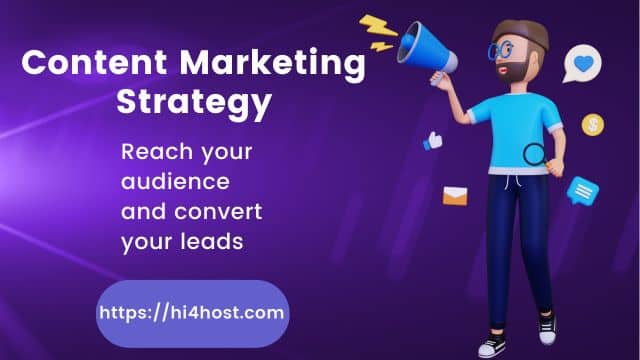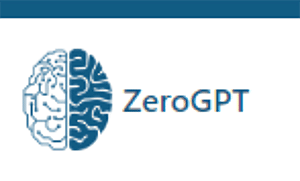There are various perspectives to consider when it comes to content creation and plain your Content Marketing Strategy. Some content developers prioritize creating content for their audience, while others focus on creating content for search engines. However, the importance of content cannot be overstated in the online world. Content serves to attract a significant number of visitors to your website, build trust with your audience, provide answers to their questions, and much more.
In content marketing, quality should take precedence over quantity. The primary objective of content production is to benefit the user. When creating your content, ensure that it is original, valuable, and up-to-date. Additionally, your content should be relevant to encourage more shares and links. Before embarking on content creation, take time to understand your users and their needs in order to keep them engaged. Maintaining the flow and originality of your content is crucial.
Content Marketing Strategy: How to Build a Winning Plan for Your Business
Content marketing is a powerful tool for businesses looking to increase brand awareness, generate leads, and drive revenue. But, to achieve these goals, you need to have a well-defined content marketing strategy in place. In this article, we’ll explore the key components of a winning content marketing strategy and how you can implement them to drive success.
Read More: Web Hosting Guide – How to Choose a Web Host
– Define Your Objectives and Target Audience
Before you start creating content, you need to define your objectives and target audience. What are you trying to achieve with your content marketing? Who is your target audience, and what are their pain points and interests? By answering these questions, you can create content that resonates with your audience and drives your business objectives.
When it comes to developing a successful content marketing strategy, the first step is to define your objectives and target audience. Without a clear understanding of what you hope to achieve and who you want to reach, your content may not be effective in attracting the right audience and achieving your goals.
To define your objectives, consider what you hope to achieve with your content marketing efforts. Are you looking to increase brand awareness, generate leads, drive website traffic, or improve customer engagement? Once you have identified your objectives, you can create specific goals that will help you measure your progress and success.
Next, you need to define your target audience. Who are you trying to reach with your content? What are their interests, needs, and pain points? Understanding your target audience will help you create content that resonates with them and provides value.

– Conduct a Content Audit
To build an effective content marketing strategy, you need to understand your existing content. Conduct a content audit to identify your best-performing content, content gaps, and opportunities for optimization. This will help you create a more targeted and effective content marketing plan.
To conduct a content audit, you need to follow these steps:
- Create a spreadsheet: Create a spreadsheet to document all the content on your website or other digital platforms, including the URL, type of content, publication date, and any other relevant information.
- Categorize your content: Categorize your content by topic or format to help you analyze it more effectively.
- Evaluate the quality of your content: Evaluate the quality of your content based on factors such as readability, grammar, relevance, and engagement. You can use tools like Google Analytics to measure engagement metrics such as bounce rate, time on page, and social shares.
- Identify content gaps: Identify content gaps by analyzing your website’s traffic data and user behavior, and by researching industry trends and keywords.
- Optimize existing content: Identify opportunities to optimize existing content by adding or updating meta descriptions, improving internal linking, and adding relevant keywords.
- Create a plan for new content: Based on your content audit findings, create a plan for new content that fills content gaps and aligns with your content marketing objectives.
– Develop a Content Plan
Once you’ve defined your objectives, and target audience, and conducted a content audit, it’s time to develop a content plan. Your plan should outline the types of content you’ll create, how often you’ll create it, and who will be responsible for creating it. Additionally, your plan should include a content distribution strategy, outlining how you’ll promote your content to reach your target audience.
Here are some key steps to developing a content plan:
-
Identify Content Types: Based on your objectives and target audience, identify the types of content that will be most effective in reaching your goals. This may include blog posts, videos, social media posts, infographics, whitepapers, case studies, podcasts, and more.
-
Create a Content Calendar: Develop a calendar that outlines when you will publish each piece of content. Consider factors like seasonality, industry events, and product launches that may impact your content schedule. It’s important to balance the frequency of your content with its quality, so be realistic about how much you can produce.
-
Assign Responsibilities: Determine who will be responsible for creating and publishing each piece of content. This may include writers, designers, videographers, social media managers, and other team members. Clearly define roles and responsibilities to ensure that everyone is on the same page.
-
Determine Promotion Channels: Identify the channels through which you will promote each piece of content. This may include email marketing, social media, paid advertising, influencer marketing, and more. Be strategic about which channels you use, based on your target audience and the goals of each piece of content.
-
Measure Success: Establish key performance indicators (KPIs) that will help you measure the success of your content marketing efforts. This may include metrics like website traffic, engagement rates, lead generation, and sales. Regularly review and analyze your data to identify what’s working and what’s not, and make adjustments as needed.
-
Stay Agile: Finally, remember that your content plan is not set in stone. As you create and publish content, you may learn new things about your audience and what types of content resonate best. Be open to making changes to your plan as needed to ensure that you are continuously optimizing your content marketing strategy.

– Create High-Quality Content
To stand out in a crowded digital landscape, your content needs to be high-quality and valuable to your target audience. Focus on creating content that educates, entertains, and informs your audience, while aligning with your business objectives.
-
Know your audience: Before creating any content, you must understand your target audience. This involves identifying their needs, preferences, pain points, and interests. Conducting thorough research can help you gain insights into your audience’s behavior, preferences, and demographics.
-
Focus on the user: The content you create should always prioritize the user’s needs. Your content should aim to answer their questions, provide solutions to their problems, and help them make informed decisions. Avoid creating content that is solely focused on promoting your products or services, as this can be off-putting to your audience.
-
Create engaging headlines: The headline is the first thing your audience will see, and it’s what will determine whether they will click and read your content. Your headline should be attention-grabbing, informative, and relevant to your target audience.
-
Use visuals: Incorporating visuals such as images, videos, infographics, and diagrams can make your content more engaging and appealing to your audience. Visuals can help break up long blocks of text, improve comprehension, and increase retention.
-
Focus on quality, not quantity: It’s better to produce one high-quality piece of content than ten mediocre ones. Ensure that your content is well-researched, well-written, and provides value to your audience.
-
Use a consistent brand voice: A consistent brand voice can help establish your brand’s identity and create a sense of familiarity and trust with your audience. Ensure that your content is written in a consistent tone and style across all your channels.
-
Edit and proofread: Before publishing any content, it’s crucial to edit and proofread it thoroughly. This involves checking for grammatical errors, typos, and inconsistencies in tone and style.

An important note for you, these days there are many tools that operate with artificial intelligence, which enable you to create content easily and quickly. However, my advice to you is not to rely on them entirely. Make them just auxiliary tools that generate ideas and formats for you and nothing more. Especially with the presence of many tools that can detect artificial intelligence, such as the distinctive AI detector tool, which can identify if any content is human-generated or otherwise.
– Optimize Your Content for SEO
Search engine optimization (SEO) is critical for driving traffic to your content. Make sure your content is optimized for SEO by conducting keyword research, optimizing your meta tags and headlines, and building high-quality backlinks to your content.
-
Keyword Research: One of the first steps to optimizing your content for SEO is conducting keyword research. This involves identifying the keywords and phrases that your target audience is searching for on search engines. You can use tools such as Google Keyword Planner or Ahrefs to find relevant keywords that will help your content rank higher on search engine result pages (SERPs).
-
Use Relevant Keywords in Your Content: Once you have identified relevant keywords, it’s important to use them strategically in your content. Include your primary keyword in the title of your content, in the meta description, and in the body of your content. But be careful not to stuff your content with too many keywords, as this can hurt your ranking.
-
Create High-Quality Content: Search engines value high-quality content that is informative, useful, and engaging. When creating content, focus on providing value to your audience, rather than just trying to rank for keywords. Content that is well-written, properly formatted, and contains relevant images and videos will rank higher on search engines.
-
Use Header Tags: Using header tags (H1, H2, H3) in your content can help search engines understand the structure of your content. Use your primary keyword in your H1 tag, and use H2 and H3 tags to organize your content into subheadings. This not only helps with SEO but also makes your content easier to read and digest for your audience.
-
Optimize Images and Videos: Images and videos are essential components of high-quality content, but they also need to be optimized for SEO. Use descriptive file names and alt tags for your images and videos, and compress them to improve loading times. This will help your content rank higher on search engines and improve the user experience for your audience.
-
Internal and External Linking: Linking to relevant internal and external pages in your content can also help with SEO. Internal linking helps search engines understand the structure of your website and improves the user experience for your audience. External linking to reputable sources can also boost your content’s credibility and authority.

– Measure Your Results
To understand the effectiveness of your content marketing strategy, you need to measure your results. Use analytics tools to track your website traffic, engagement metrics, and conversion rates. Use this data to optimize your content marketing strategy and drive better results over time.
- Set Metrics and KPIs:
The first step to measuring your results is to define the metrics and key performance indicators (KPIs) that you will track. Metrics could include website traffic, leads generated, conversion rates, engagement rates, social media shares, or sales. KPIs are specific goals that you set for each metric. For instance, if your metric is website traffic, your KPI could be to increase your website traffic by 20% within six months.
- Use Analytics Tools:
There are various analytics tools available that can help you track your metrics and KPIs. Google Analytics is one of the most popular and provides a wealth of data on website traffic, user behavior, and conversion rates. Other tools such as BuzzSumo, SEMrush, and Ahrefs can help you track social media engagement, keyword rankings, and backlinks.
- Analyze Data Regularly:
Regularly analyzing your data is crucial to understand how your content marketing strategy is performing. Set a regular schedule for reviewing your metrics and KPIs, whether it’s weekly, monthly, or quarterly. This will help you spot trends and patterns over time, and to identify which pieces of content are performing best.
- Adjust Your Strategy:
Based on your analysis, adjust your content marketing strategy accordingly. If certain types of content are generating more traffic or leads than others, focus on producing more of that content. If certain channels, such as social media, are generating more engagement than others, adjust your strategy to allocate more resources to those channels.
- Continuously Improve:
Measuring your results is not a one-time event. It’s an ongoing process that requires continuous improvement. Use your analysis to identify areas where you can improve your content marketing strategy and to test new tactics and approaches. By continually refining your strategy, you can maximize the effectiveness of your content and achieve better results over time.
Final Thoughts
In conclusion, measuring your results is a crucial step in any content marketing strategy. By defining your metrics and KPIs, using analytics tools, analyzing data regularly, adjusting your strategy, and continuously improving, you can ensure that your content marketing efforts are delivering the desired results and contributing to your overall business goals.
A well-defined content marketing strategy is critical for businesses looking to drive success online. By defining your objectives, and target audience, and developing a content plan, you can create high-quality content that resonates with your audience and drives your business goals. By optimizing your content for SEO and measuring your results, you can continuously improve your content marketing strategy and drive better results over time.
Read More: Power of Cloud Hosting: What You Need to Know
**********************************



